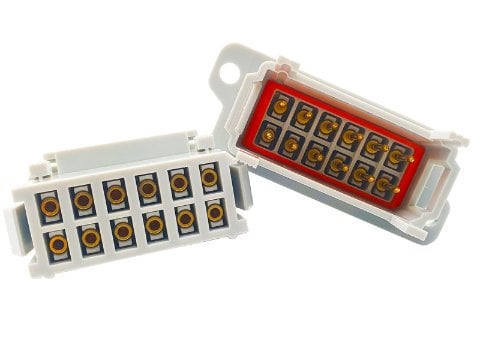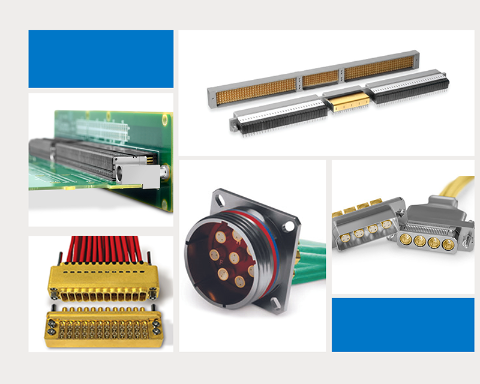- Data rates exceeding 2 Gbit/Sec
- Bandwidth: Up to 3 Gigahertz Low-latency, high-throughput signal processing applications
- Low skew & jitter
- Matched impedance differential
- Pair Twinax & Quadrax
- Standard & Custom Insert Arrangements
- Anti-Rotational Cavities
Smiths Interconnect offers a complete line of differential Twinax and Quadrax connectors, contacts and cable assemblies for high speed Ethernet, Firewire, and Fibre Channel applications. Differential pair quadrax and twinax connectors and cable assemblies offer superior performance in high speed matched impedance data-on-demand applications. The signal to signal and signal to shield characteristic impedance is maintained throughout the connector pair.
A true twinaxial connector interface ensures signal integrity while minimizing jitter and data rate errors. ARINC 600 high speed connectors are designed for interconnect systems including 100 Base-T, Ethernet and high speed video hot-link applications. These connectors can be fitted with Ethernet based quadrax 100 ohm contacts or differential pair 100 ohm or 150 ohm matched impedance contacts. The ARINC 600 series can also be routed with ruggedized expanded beam fiber optic or triaxial contacts designed for numerous low-loss twinaxial and concentric triax cables in a variety of impedance values.







